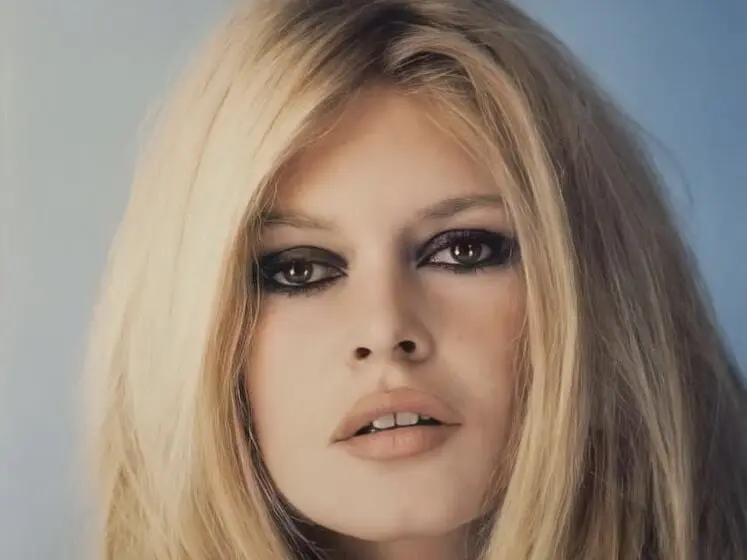 “Aging is sad, but growing up is pleasant,” said the iconic French actress who was often labeled as a “carefree girl.” The shy daughter of a strict Catholic family was destined in the mid-20th century to become the most alluring woman in European cinema, a style icon, and a symbol of rebellion. Her name became synonymous with free thought, sexual liberation, and emancipation. While she became the voice of the women’s movement in post-war conservative France without personally participating, she contributed to the liberalization of cinema by being one of the first to appear naked on screen, facing the condemnation of clerics and conservatives.
“Aging is sad, but growing up is pleasant,” said the iconic French actress who was often labeled as a “carefree girl.” The shy daughter of a strict Catholic family was destined in the mid-20th century to become the most alluring woman in European cinema, a style icon, and a symbol of rebellion. Her name became synonymous with free thought, sexual liberation, and emancipation. While she became the voice of the women’s movement in post-war conservative France without personally participating, she contributed to the liberalization of cinema by being one of the first to appear naked on screen, facing the condemnation of clerics and conservatives.
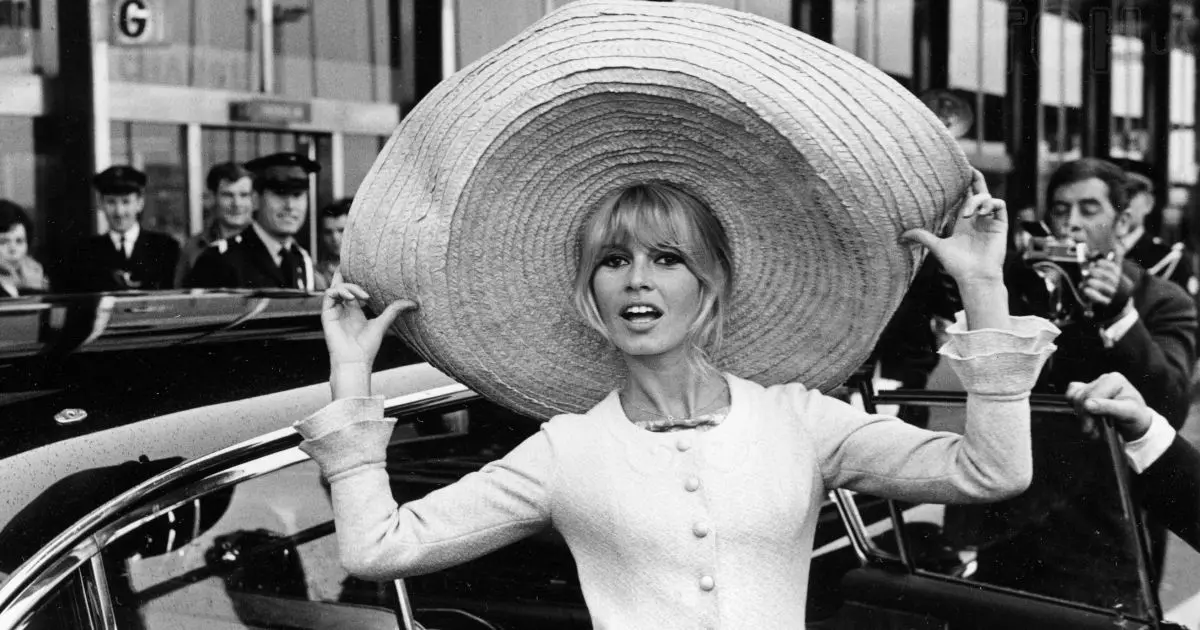
A Guiding Light for a Generation
The sexuality, spontaneity, and innocence of Brigitte Bardot’s on-screen persona made her, for some, “the embodiment of sin and debauchery,” while for others, she was an object of adoration. Her success in romantic comedies did not exclude her from having a repertoire of significant films, including the dramas “And God Created Woman,” “The Truth,” and “Contempt.” For her role in “Viva Maria!” she was nominated for a British BAFTA award. However, to the world, the beauty whom the British film magazine Empire ranked among the hundred sexiest movie stars of all time is primarily known as a daredevil who popularized , showcasing the “frivolous attire” in her roles and even at the Cannes Film Festival.
Experts believe that Brigitte Bardot’s influence lay in the fact that she “pioneered a new way of life for her generation,” becoming a role model for mass imitation. Girls around the world adopted her checkered dresses, faded , black eyeliner, curtain bangs on tousled hair, “Babette” or “Sour Cabbage” hairstyles, and the habit of lounging on the beaches of Saint-Tropez, along with the right for women to enjoy life’s pleasures equally with men. Having started “adult relationships” at the age of 15, the alluring would go on to have many romances, four marriages, and the experience of giving up a child (Brigitte Bardot gave her son to his father during their divorce, as she did not feel ready to care for him).
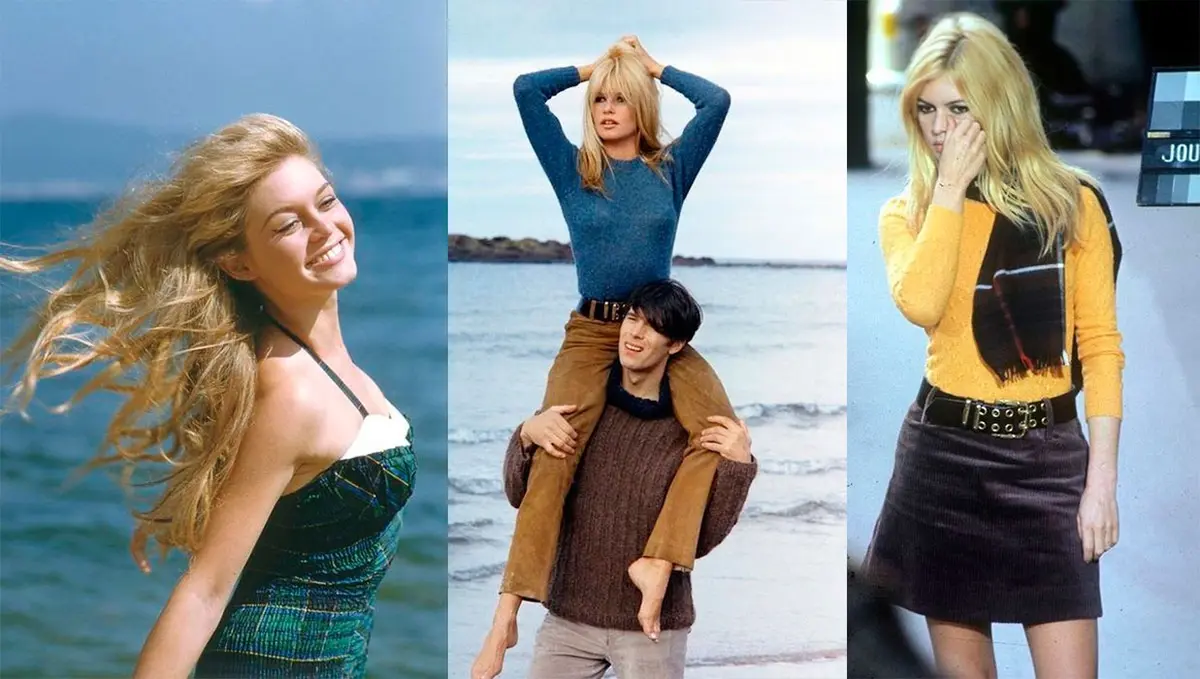
Staying True to Herself
The actress, who starred in 48 films, and the singer, who recorded 80 songs, had no illusions about her talent: Brigitte Bardot realized in her youth that she could not transform herself. She did not seek to change her appearance either; she is one of the few stars who did not undergo plastic surgery. A woman who studied ballet in her youth was an aesthetic ideal for young members of the iconic British rock band The Beatles, including and They were not alone in their admiration: in 1970, Brigitte Bardot was chosen as the first model for the bust of Marianne – the official symbol of France. Standing at 5’7″, Bardot maintained her weight at around 137 pounds throughout her life with a vegetarian diet.
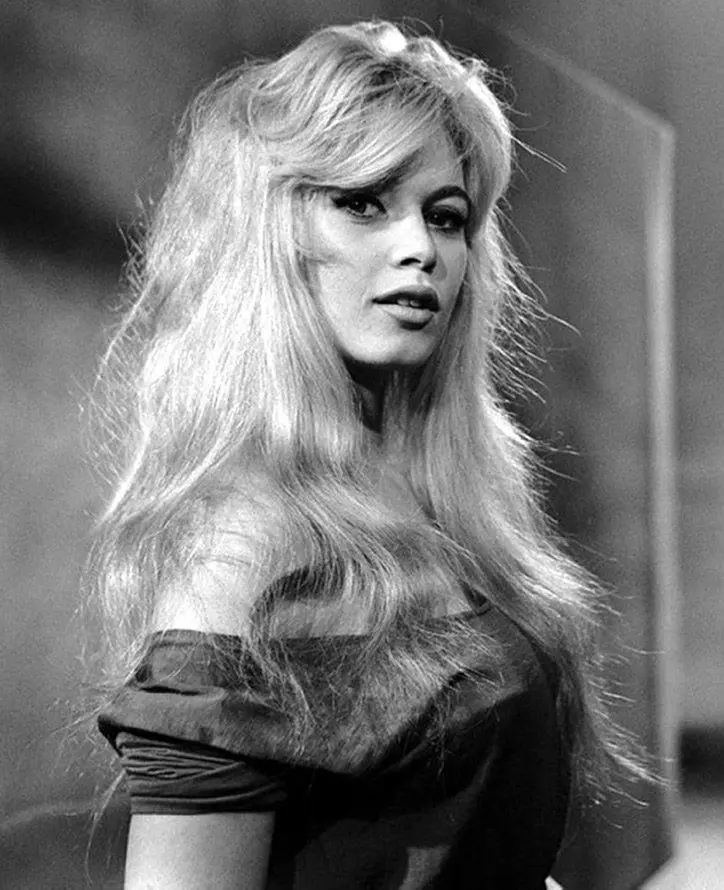
Maintaining her ideal figure until the end of her film career, the star concluded her 20-year screen journey at the age of 39. The founder, leader, and activist of the “Brigitte Bardot Foundation” dedicated her troubled heart to animal protection. Despite not taking on new film projects for over half a century (her last film was released in 1973), her name has remained prominent: particularly in court hearings, where she has been fined multiple times for inciting various forms of hatred through her criticism of the LGBT movement, migrants, and Islam in France. At 90 years old, Brigitte Bardot criticizes the current president, supports the right-wing opposition, denies accusations of “misanthropy,” and justifies her apt nickname: Bardot still assures her critics that she remains a “carefree girl.”
Ballet: A Ticket to Fame
Brigitte Anne-Marie Bardot was born in Paris on September 28, 1934. Her parents, both Parisians, raised their two daughters in strict Catholic traditions. Along with her younger sister, Brigitte attended a Catholic school. Her engineer father was able to hire nannies and governesses for the children, one of whom was Italian and taught Brigitte the language. Unlike her sister, Brigitte was considered the “ugly duckling” by her parents. Her mother would often say, “Brigitte is a little monster, and she’s not even pretty.” The girl, who suffered from allergic rashes, wore braces and glasses for nearsightedness, spent many years ashamed of her appearance. Bardot recalled growing up gloomy and withdrawn.
However, her mother did do something good for her daughter – she enrolled the sisters in ballet classes. The girls began studying at the age of seven with a former star of the Grand Opera, Marcel Burga, and those lessons helped shy Brigitte gain confidence. Her natural grace allowed her to excel in ballet choreography, and in 1947, she was accepted into the National Conservatory of Music and Dance. Three years of attending ballet classes with leading choreographers in the capital paid off: the girl developed a shapely figure and a graceful walk. Her new appearance was used by her mother to promote her own fashion store, where her daughter participated in fashion shows as a model.
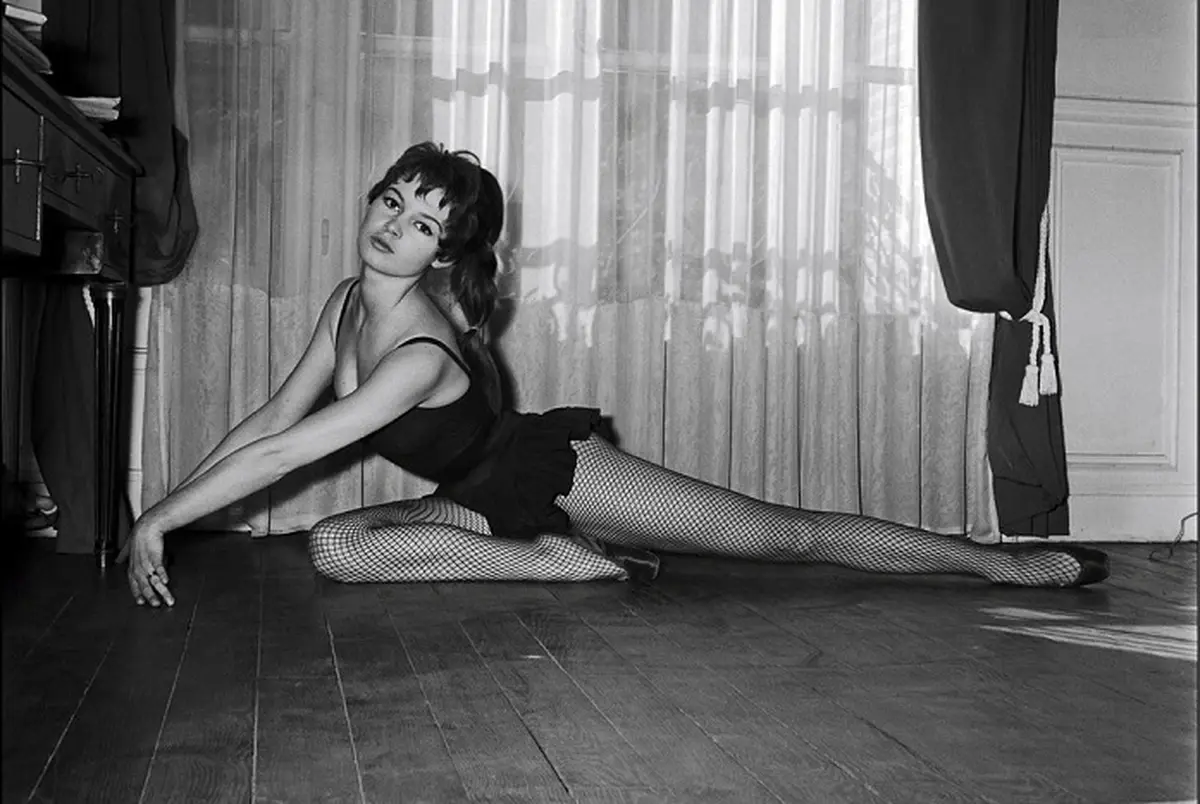
The Naked Truth
A friend of her mother, an editor at Jardin des Modes, published several photos of Brigitte Bardot from the runway. Those pictures caught the attention of a colleague at Elle: the editor of the prestigious magazine invited the girl to model for a fee without revealing her name (which her father insisted on). A year later, the beauty with the initials “B.B.” received another invitation to shoot for Elle, and that magazine cover was seen by Roger Vadim, an assistant director to Marc Allegret. He showed the photos to his boss, and the director invited the girl to audition for the film “The Fallen Laurels.” Although her first attempt to enter the film industry was unsuccessful, Brigitte caught the eye of Roger Vadim, who would have a significant impact on her film career. Their acquaintance blossomed into a romance, though it was not without scandal.
The young bride announced her intention to marry to her parents at the age of 15. This was a shock to them. Of course, there could be no talk of a schoolgirl’s relationship with an adult man. But Brigitte ignored everyone, skipping classes and secretly meeting her lover. When her parents tried to put a stop to the scandalous relationship, Brigitte attempted to commit suicide by gas poisoning. They were no longer separated, but they set the condition that Roger Vadim could marry her only when she turned 18. In the meantime, thanks to Roger Vadim, the debutante was offered the lead role in the film “Manina, the Girl in a Bikini.” On the set in Nice, Bardot spent the entire time in a revealing swimsuit. She appeared in all the scenes wearing it.
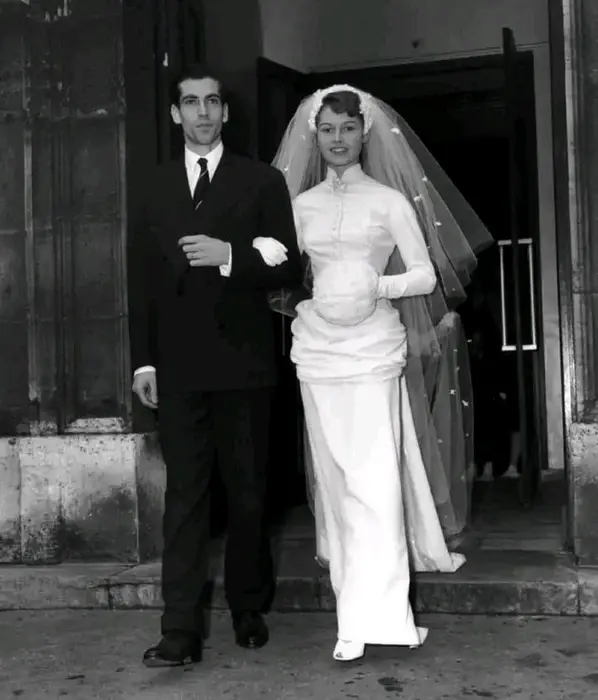
Brigitte Bardot and Roger Vadim’s wedding
The Bride of Paris Match
At the end of 1952, Brigitte Bardot and Roger Vadim got married. At that time, he worked as a journalist while also writing scripts. When his stunning girlfriend visited him at the office, colleagues eagerly dropped their urgent tasks. Reporters dubbed the beauty “the bride of Paris Match.” Roger Vadim found a producer for his young wife and became her press agent. Bardot’s career skyrocketed after her sensational appearance in on an American aircraft carrier in front of 3,500 sailors during the Cannes Film Festival in 1953. At that time, she was offered a contract by the American studio Universal, but due to her natural indecisiveness, the young actress turned it down.
British producer Betty Box had better luck, as she soon secured the coveted “trophy” for the role of the seductress in Ralph Thomas’s comedy “Doctor at Sea.” Completely naked, Brigitte Bardot in a brief shower scene became the first “risqué scene” in the history of British sound cinema. Contrary to expectations, the guardians of public morality remained silent this time, and critics first dubbed the actress a “sex kitten” and “a breath of fresh air.” After the 1955 film “The Light of the Street,” a series of projects with director Jacques Gauthier was planned, but he died during a botched operation, and the project was completed by the administrator. She and Brigitte Bardot bonded over their “hatred of filming and the film process in general.”
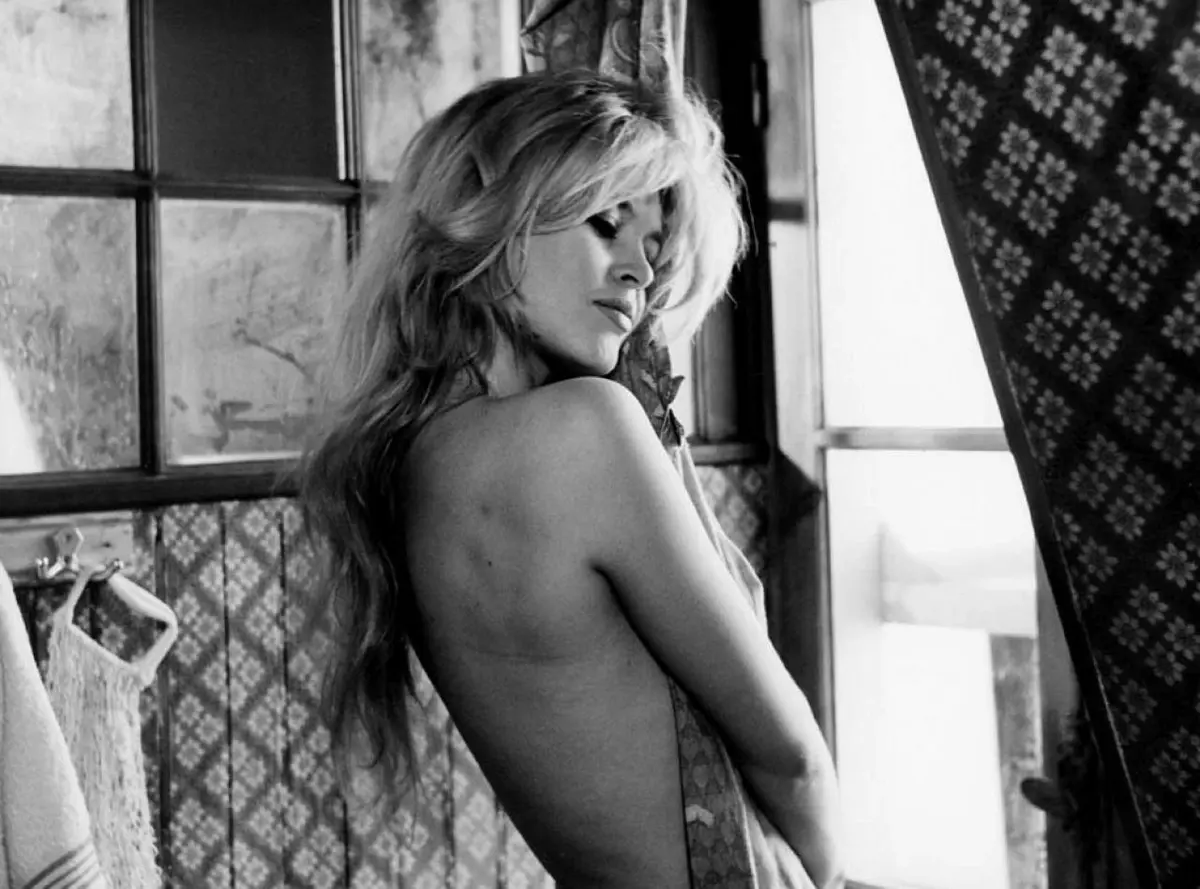
A Tender Creature
Brigitte Bardot’s subsequent films solidified her status as a French sex symbol. Among them were works scripted by her talented husband. However, this marriage was hindered by the blossoming female allure, so masterfully nurtured in “Galatea” by the skilled “Pygmalion.” In 1956, Roger Vadim became obsessed with the idea of filming his wife in a movie that would reveal her “natural, unmasked sexuality.” The artist aimed to create “revolutionary cinema” that challenged stagnant moral foundations. Thus, the film “And God Created Woman” featuring Brigitte Bardot and Jean-Louis Trintignant was born. The Catholic Church condemned the provocative behavior of the heroine. The on-set romance that developed during filming led to Roger Vadim’s divorce from his wife.
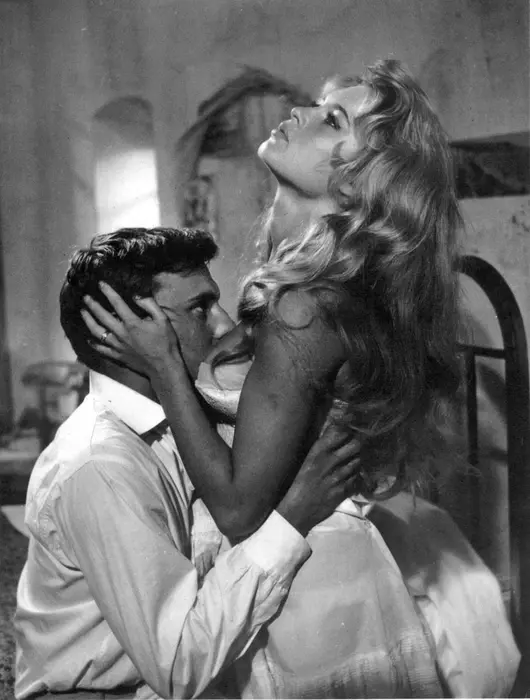
Brigitte Bardot with Jean-Louis Trintignant
The marriage was dissolved in December 1957. “We divorced without scandals, civilly and amicably,” Roger Vadim recalled. “But it wasn’t without a few sad and poignant moments. When it was all over, and we were left alone in the courthouse hallway, I embraced Brigitte, and we kissed.” The divorce did not prevent the former couple from remaining close friends. They continued to collaborate as well. As the renowned partner of Bardot in the 1958 film “In Case of Misfortune,” remarked that he saw in this woman “a tender creature who cannot live without love and affection.” This applied to both the character and the actress herself, as those who knew her could attest.
Fame: A Path to Underground Life
Brigitte Bardot’s new romance with Jean-Louis Trintignant was widely covered by tabloids, but after two years, the lovers parted ways when the actor was drafted into the army. The woman then briefly dated married French musician Gilbert Bécaud before starting a relationship with future star Sacha Distel. Her breakup with this singer, composer, and actor occurred after filming “Babette Goes to War,” where Bardot became close to young actor Jacques Charrier, with whom she became pregnant. They married in June 1959 under the watchful eye of numerous reporters. In the last months of her pregnancy, the actress did not leave the house, which was surrounded by paparazzi 24/7. After giving birth to her son Nicolas-Jacques Charrier in January 1960, the press laid siege to the star’s residence.
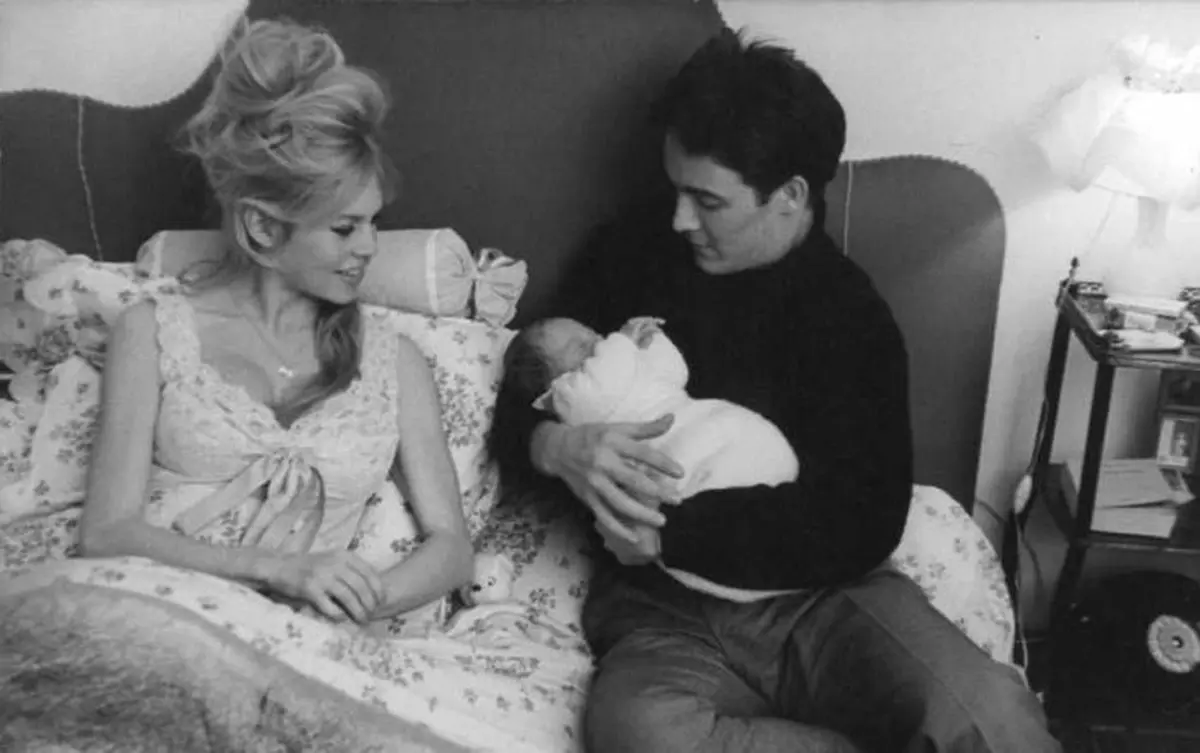
Brigitte with Jacques Charrier and newborn son
The stress took a toll on the couple’s life. Even before the child was born, Charrier was drafted into the army and was only discharged after being diagnosed with a mental disorder. The pressure led to severe nervous exhaustion. It turned out that both had tendencies toward suicide in this marriage. During the filming of “The Truth,” Bardot developed feelings for her co-star Sami Frey. When her husband caught the lovers in a car, he started a fight. Scandalous photos were published by paparazzi. Charrier demanded a divorce and custody of the child. Later, the actress regretted agreeing to give up her son (which worsened their relationship), but at that time, she could not even care for herself. Bardot lamented that fame had turned her life into an underground existence.
Trying Everything
Such an existence became unbearable: the woman suffered from and repeatedly attempted suicide. On her 26th birthday, the star overdosed on barbiturates and cut her wrists. Neighbors found her in critical condition and saved her by taking her to the hospital. The reason for her latest suicide attempt was the emotional emptiness stemming from loneliness: when her new lover was also drafted into the army, she was left alone. However, not for long. Her next partners included Brazilian musician and dancer Bob Zagury and French singer-songwriter Serge Gainsbourg (both contributed to Brigitte Bardot’s musical career). Her third husband was the extravagant German multimillionaire Gunter Sachs.
After her divorce from the wealthy man due to mutual infidelity, the now-mature Bardot had romances with a 20-year-old political science student, a bartender, a budding actor, a sculptor… In the early 1980s, Bardot was diagnosed with breast cancer. After surgery and a course of therapy, she fully recovered. Meanwhile, Brigitte Bardot’s son, Nicolas, studied economics at the University of Paris, learned to play the piano, created music, arranged songs, worked as a model for couturier Pierre Cardin, and became a computer specialist. After marrying the daughter of a Norwegian diplomat, he became a father to two daughters (the family lives in Oslo). In adulthood, Nicolas let go of his grievances against his mother, who married politician Bernard d’Ormal for the fourth time.
A New Life
“I was reborn when I started working with animals,” the actress stated in her memoirs. “When I look at myself on screen, I see someone else, someone I don’t even want to know. Because only now have I become a person who has found meaning in life.”
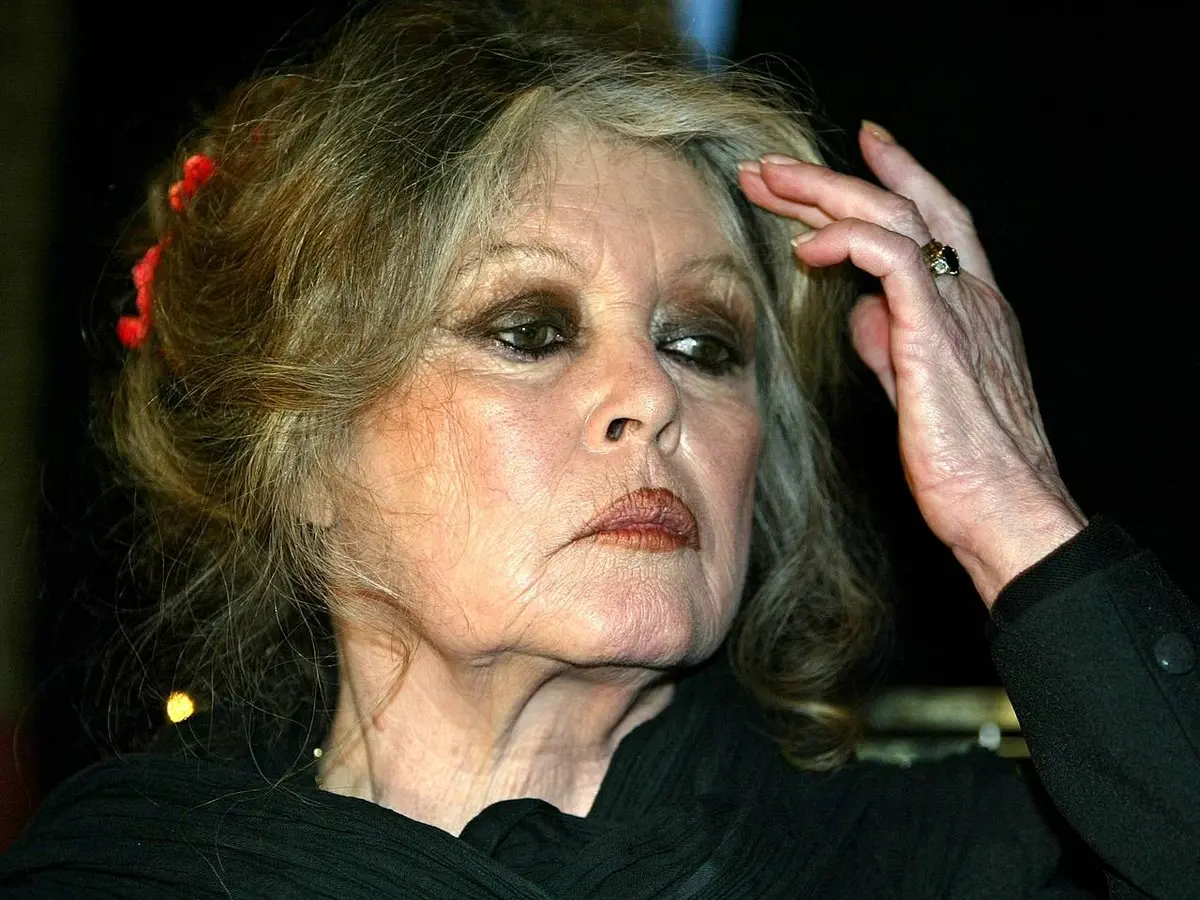
During her last film shoots, Bardot bought a goat from a local farmer to save it from slaughter, and during a scandal at a hotel where the star was not allowed in with her beloved companion, she realized what she needed to do. “I realized that I was a prisoner, alienated from true life values,” the actress wrote in her autobiography “Initials B.B.” “I have only one life, and I must live it my way!” In the final scene of her last film, Brigitte Bardot appeared with a bird on her hand, which became a symbol of her new life dedicated to animal rights.
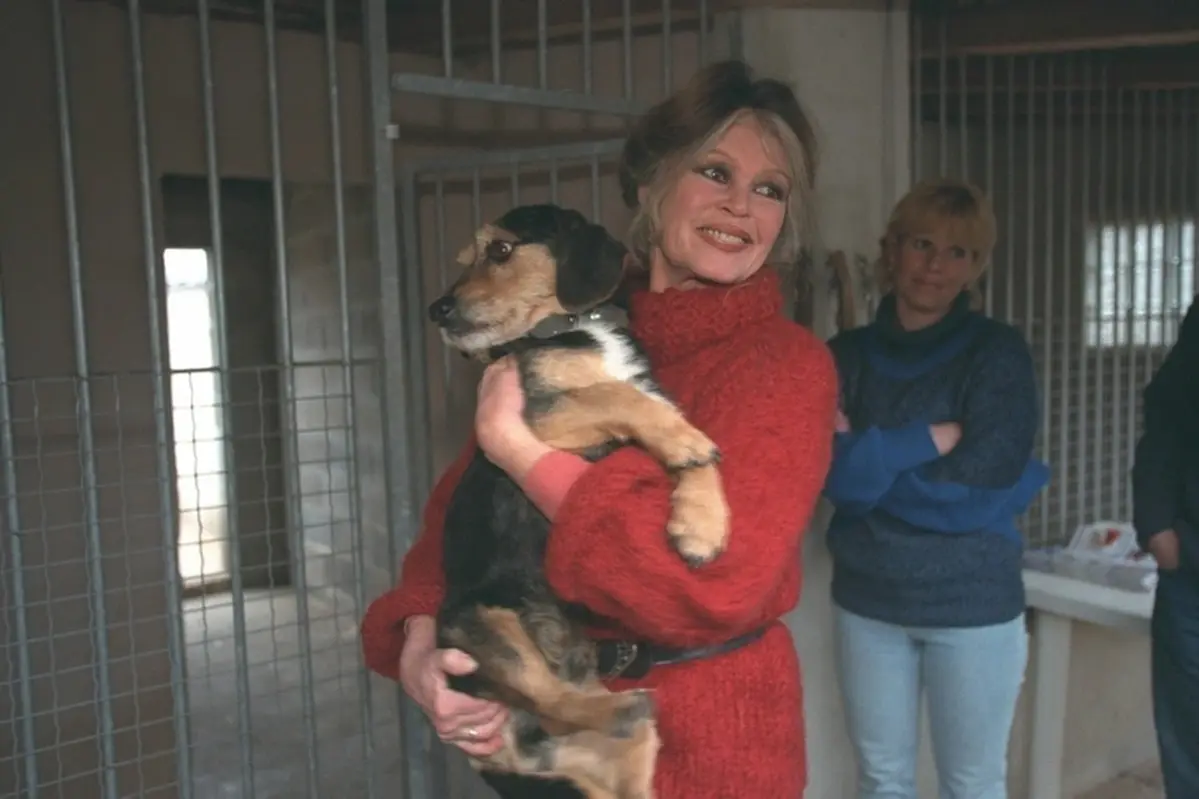
In 1977, she launched an active campaign against the slaughter of seals in Eastern Canada. She later became a well-known opponent of seal and whale hunting, game hunting, cockfighting, dog fighting, bullfighting, fur trading, and the consumption of horse meat. The star spoke out against the use of animals in medical and industrial experiments, fought for humane treatment of animals in zoos, and raised funds to create shelters for koalas in Australia, primates and elephants in Africa, and bears in Bulgaria. By 1997, the “Brigitte Bardot Foundation” had 27,000 members in 42 countries, and within two decades, this group grew to 75,000 activists, one of whom donated her house in Saint-Tropez to the cause and never regretted saying goodbye to cinema.
Photos from open sources
